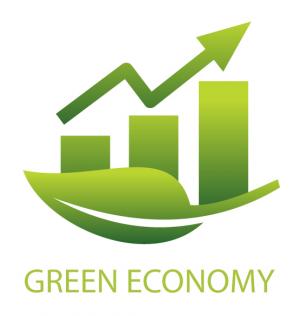Ecosystem Restoration in Rwanda
Description
Source: UNEP (2011) Green Economy . Advisory Services.
Rwanda has helped to restore the population of the critically endangered species, the Gorilla beringei graueri, to a slight increase in the Virungas National Park. In addition to the ecological benefits of preserving a threatened species, this scheme to protect the Rwandan mountain gorilla is also generating substantial revenues from tourism. The country?s booming tourism industry, which now accounts for the biggest share of national GDP, is driven primarily by the flagship gorilla. After a decline in tourism in the 1990s, gorilla visitation has since increased from less than 1200 tourists in 2000 to a record of 7417 visitors in 2004. With visitors paying US $375 each to see the gorillas, these tourists have generated over $3 million in revenue every year since 2005. This has also contributed to the creation of many new jobs to cope with the management and maintenance of the National Park and its related touristic activities.
Rwanda?s wetland restoration efforts are another milestone in rebuilding the country?s natural capital. The wetlands in Rwanda cover a total area of 165,000 hectares, thereby comprising about 7 per cent of the country?s total surface area. The marshy lakeside Akanyaru complex of Nyabarongo and Akagera National Park are hot spots for biodiversity and are especially rich in bird species. The Association for the Conservation of Nature in Rwanda is combating the intensive illegal farming along the Nyabarongo River by eliminating agricultural crops and training the local community in the production of high-quality products made from materials harvested sustainably from the wetland, such as papyrus and pennisetum. This conservation programme has produced not only environmental but also economic benefits. For example, previously, basket weavers manufactured low-quality products and sold them for $2 to $3. After receiving training and gaining access to new markets, these same individuals can now sell higher-quality woven baskets for $10.
SDGS & Targets
Goal 8
Promote sustained, inclusive and sustainable economic growth, full and productive employment and decent work for all
8.1
8.1.1
Annual growth rate of real GDP per capita
8.2
Achieve higher levels of economic productivity through diversification, technological upgrading and innovation, including through a focus on high-value added and labour-intensive sectors
8.2.1
Annual growth rate of real GDP per employed person
8.3
Promote development-oriented policies that support productive activities, decent job creation, entrepreneurship, creativity and innovation, and encourage the formalization and growth of micro-, small- and medium-sized enterprises, including through access to financial services
8.3.1
Proportion of informal employment in total employment, by sector and sex
8.4
Improve progressively, through 2030, global resource efficiency in consumption and production and endeavour to decouple economic growth from environmental degradation, in accordance with the 10-Year Framework of Programmes on Sustainable Consumption and Production, with developed countries taking the lead
8.4.1
Material footprint, material footprint per capita, and material footprint per GDP
8.4.2
Domestic material consumption, domestic material consumption per capita, and domestic material consumption per GDP
8.5
8.5.1
Average hourly earnings of female and male employees, by occupation, age and persons with disabilities
8.5.2
Unemployment rate, by sex, age and persons with disabilities
8.6
8.6.1
Proportion of youth (aged 15-24 years) not in education, employment or training
8.7
Take immediate and effective measures to eradicate forced labour, end modern slavery and human trafficking and secure the prohibition and elimination of the worst forms of child labour, including recruitment and use of child soldiers, and by 2025 end child labour in all its forms
8.7.1
Proportion and number of children aged 5‑17 years engaged in child labour, by sex and age
8.8
Protect labour rights and promote safe and secure working environments for all workers, including migrant workers, in particular women migrants, and those in precarious employment
8.8.1
Fatal and non-fatal occupational injuries per 100,000 workers, by sex and migrant status
8.8.2
Level of national compliance with labour rights (freedom of association and collective bargaining) based on International Labour Organization (ILO) textual sources and national legislation, by sex and migrant status
8.9
By 2030, devise and implement policies to promote sustainable tourism that creates jobs and promotes local culture and products
8.9.1
Tourism direct GDP as a proportion of total GDP and in growth rate
8.10
Strengthen the capacity of domestic financial institutions to encourage and expand access to banking, insurance and financial services for all
8.10.1
(a) Number of commercial bank branches per 100,000 adults and (b) number of automated teller machines (ATMs) per 100,000 adults
8.10.2
Proportion of adults (15 years and older) with an account at a bank or other financial institution or with a mobile-money-service provider
8.a
8.a.1
Aid for Trade commitments and disbursements
8.b
By 2020, develop and operationalize a global strategy for youth employment and implement the Global Jobs Pact of the International Labour Organization
8.b.1
Existence of a developed and operationalized national strategy for youth employment, as a distinct strategy or as part of a national employment strategy
SDG 14 targets covered
Deliverables & Timeline
Resources mobilized
Partnership Progress
Feedback
Action Network


